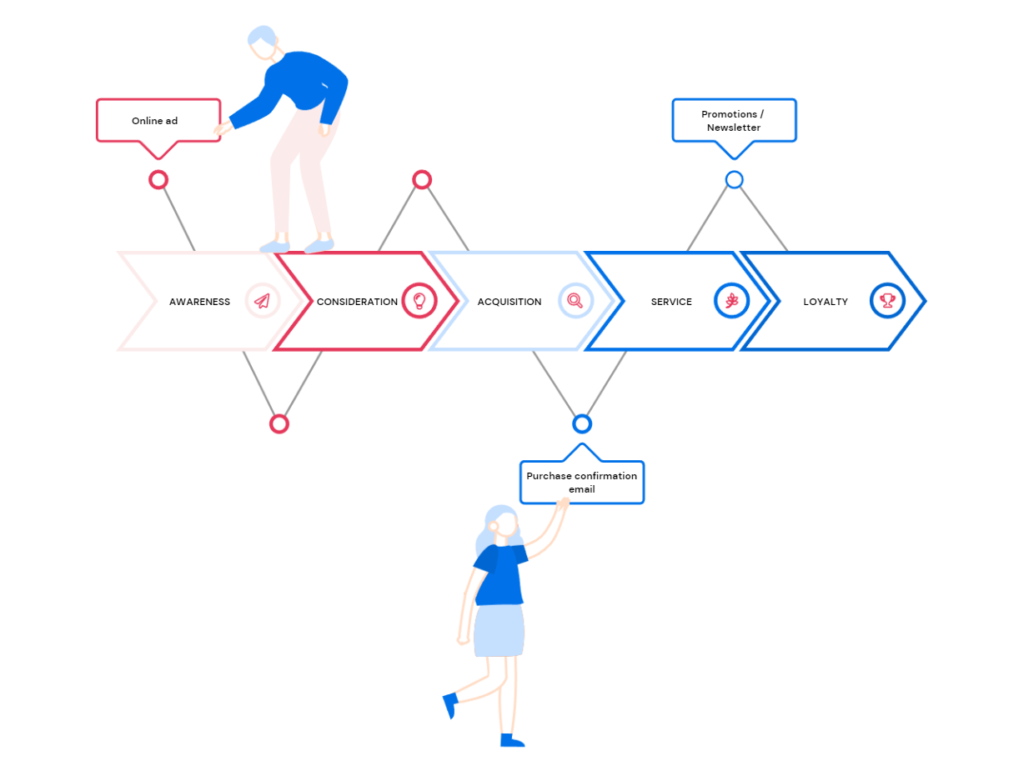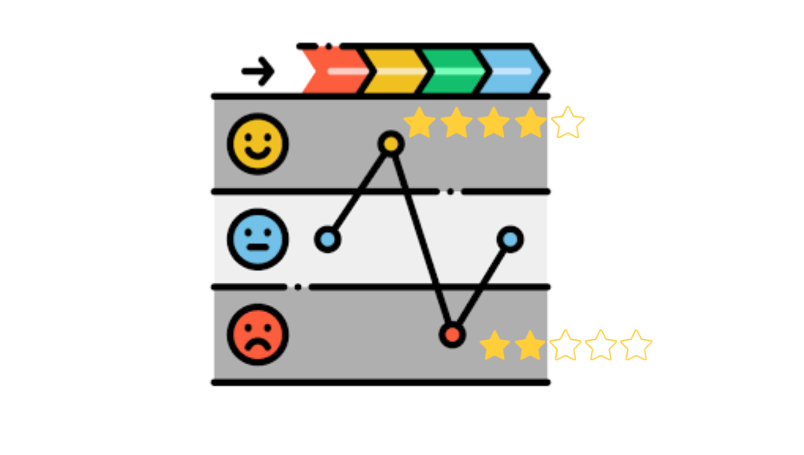Have you ever wondered what makes some websites super effective at turning casual visitors into loyal customers? The digital landscape is vast and ever-evolving, but there are two particularly potent tools that businesses have harnessed to wield this transformational power: Customer Journey Mapping and Conversion Rate Optimisation (CRO).
Understanding Customer Journey Mapping
Picture the Customer Journey Map as the blueprint of a customer’s experience with a brand or website. It’s like a detailed roadmap that traces the various touchpoints a customer encounters from the moment they first stumble upon a website to the point where they make a purchase or take a desired action. This involves understanding and visualising the customer’s emotional and behavioral journey, identifying pain points, and recognising moments of delight. By walking in the shoes of the customer, businesses gain invaluable insights into what makes their audience tick.

However, understanding the customer journey is only one part of the equation. This is where Conversion Rate Optimisation enters the scene. Once you’ve mapped out the customer journey, the next step is to optimise it for conversions.
The Role of Customer Journey Mapping in CRO
- Identifying Pain Points and Opportunities: Customer Journey Mapping allows businesses to identify pain points and opportunities in the user experience. By walking in the shoes of the customer, you can pinpoint where potential roadblocks or confusion might be occurring, hindering the conversion process.
- Enhancing User Experience (UX): A smooth and enjoyable user experience is crucial for CRO success. By mapping out the customer journey, you can focus on optimising each touchpoint to create a more user-friendly environment. This includes improving page load times, simplifying navigation, and ensuring mobile responsiveness.

- Personalisation and Targeting: Understanding the customer journey enables you to tailor your marketing efforts more effectively. By knowing where users are in their journey, you can deliver personalised content, offers, and recommendations, increasing the likelihood of conversion.
- Content Strategy: Mapping the customer journey helps in developing a content strategy that aligns with each stage of the journey. Content can be crafted to address specific pain points, answer questions, and provide the information users need to move forward in their journey.
- A/B Testing and Experimentation: Customer Journey Mapping provides a roadmap for A/B testing and experimentation. You can test different elements at various stages of the journey to determine what works best in terms of conversion rates.
- Data-Driven Decision Making: With a clear understanding of the customer journey, businesses can make data-driven decisions. Metrics and analytics can be aligned with each stage of the journey to measure progress and adjust strategies accordingly.
- Customer Feedback Integration: Customer feedback is invaluable in CRO. By mapping the customer journey, you can solicit feedback at specific touchpoints and use it to refine your conversion strategy.

As you embark on your CRO journey, remember that it’s an ongoing process. Continuously monitor and adapt your strategies based on the insights gained through customer journey mapping, and you’ll be well on your way to optimising your website for maximum conversions.


